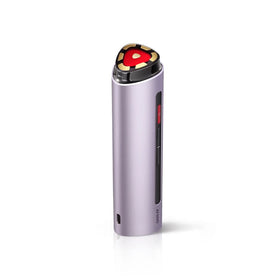Comprensión de la hiperpigmentación: causas, tipos y opciones de tratamiento
La hiperpigmentación es una afección cutánea común que puede causarnos problemas. Suele ocurrir cuando nuestra piel produce demasiada melanina, lo que a su vez provoca manchas oscuras en diversas partes del cuerpo. Aunque no represente ningún riesgo para nuestra salud, puede hacernos sentir mal. En esta entrada del blog, te guiaremos sobre las causas y los tipos de hiperpigmentación, y exploraremos opciones de tratamiento efectivas para facilitar tu propio cuidado de la piel.
¿Qué es la hiperpigmentación?
La hiperpigmentación se refiere a una afección en la que ciertas zonas de la piel se oscurecen más que la piel circundante. Este oscurecimiento se produce debido a un exceso de producción de melanina, el pigmento responsable del color de la piel. Existen cuatro tipos principales de hiperpigmentación:
Manchas solares o lentigos solares: Son manchas oscuras en la piel causadas por la exposición prolongada al sol. Se encuentran comúnmente en las zonas del cuerpo más expuestas al sol, como la cara, las manos, los hombros y los brazos. El daño solar es el tipo más común de hiperpigmentación.
Hiperpigmentación postinflamatoria (HPI): Este tipo se presenta después de una lesión o inflamación en la piel, como acné, eccema o un corte. Se presenta como manchas oscuras que se desarrollan donde la piel ha cicatrizado.
Melasma: El melasma es un tipo de hiperpigmentación que se presenta durante el embarazo o con el uso de anticonceptivos orales. Produce manchas marrones o grises en la cara, generalmente en las mejillas, la frente, la nariz y el labio superior. El melasma es más común en mujeres que en hombres y suele desaparecer después del embarazo o al suspender los anticonceptivos orales. Sin embargo, puede persistir y ser permanente.
Pecas: Las pecas son áreas pequeñas y concentradas con mayor producción de melanina. Suelen ser genéticas y aparecen predominantemente en zonas expuestas al sol, como la cara y los brazos.
Causas de la hiperpigmentación
Existen muchas causas posibles de hiperpigmentación, incluida la exposición al sol, el envejecimiento, los cambios hormonales, ciertos medicamentos y ciertas afecciones médicas.
Exposición al sol es una de las causas más comunes de hiperpigmentación. rayos ultravioleta La exposición al sol puede desencadenar la producción de melanina, lo que puede provocar manchas o manchas marrones en la piel. La exposición al sol también puede causar pecas, que son pequeñas manchas marrones que suelen aparecer en la cara, el pecho y los brazos. A medida que envejecemos, nuestra piel se vuelve más fina y más susceptible a los daños de los rayos UV, lo que puede provocar un aumento de la hiperpigmentación. Además, la piel envejecida produce menos colágeno y elastina, ambos importantes para mantener la elasticidad de la piel y prevenir la aparición de líneas de expresión y arrugas.
Cambios hormonales También puede causar hiperpigmentación. Durante el embarazo, por ejemplo, los niveles hormonales fluctúan y la melatonina aumenta. Esto puede provocar manchas oscuras en la piel llamadas cloasma o melasmaEstas manchas suelen desaparecer después del embarazo.
Ciertos medicamentos También puede causar hiperpigmentación. Algunos medicamentos que suelen causar este efecto secundario incluyen las píldoras anticonceptivas, los antipsicóticos y los antiinflamatorios no esteroideos (AINE). Si desarrolla hiperpigmentación mientras toma un medicamento, consulte con su médico sobre la posibilidad de cambiarlo a otro.
Ciertas condiciones médicas También puede causar hiperpigmentación. La enfermedad de Addison, el síndrome de Cushing y el vitíligo son solo algunos ejemplos. Si padece una afección médica que causa hiperpigmentación, consultar con un médico para tratar la afección subyacente puede ayudar a reducir los problemas de pigmentación.
Opciones de tratamiento para la hiperpigmentación
Hay algunas formas diferentes de tratar la hiperpigmentación.Algunos tratamientos comunes son:
- Peeling químicoUna exfoliación química utiliza una solución para eliminar la capa superficial de la piel, lo que puede ayudar a mejorar la apariencia de las manchas oscuras. Las exfoliaciones vienen en diferentes intensidades y pueden realizarse en el consultorio médico o en casa con productos de venta libre.
- Productos para el cuidado diario de la pielLas soluciones tópicas para la hiperpigmentación actúan inhibiendo la enzima tirosinasa, responsable de la producción de melanina en los melanocitos. Muchos ingredientes para el cuidado de la piel... como la vitamina C y el retinol.Los productos l tienen un efecto inhibidor de la tirosinasa y pueden ser eficaces para reducir la hiperpigmentación. Sin embargo, se requiere el uso constante de estos productos durante al menos tres meses para comprobar su eficacia.
- Dispositivo para el cuidado de la piel en casa:La ciencia detrás del cuidado de la piel ha avanzado mucho y nos ha traído consigo nuestra muy especial AMIRO S1 Facial RF Piel Dispositivo de apriete, que no sólo Activa profundamente el colágeno y aumenta el colágeno en un 90,93% en 7 días. pero también ofrece a nuestra piel una nutrición profunda aportada por la tecnología patentada de iones de onda media y cuatro mascarillas faciales cytocare.
Mientras tanto, en comparación con los métodos tradicionales de tratamiento que tienen posibles efectos secundarios y requieren un tiempo de tratamiento más largo, Dispositivo de reafirmación facial AMIRO S1Detección de movimiento a nivel micrométrico incorporada y Detección de temperatura NTC 200 veces/segundo Garantiza un uso seguro y cómodo, y solo necesitas 5 minutos para obtener potentes efectos antienvejecimiento en tu rostro. Además, el Amiro S1 RF Dispositivo de apriete Tiene dos modos: modo diario y modo de profundidad, para satisfacer sus diferentes necesidades en el hogar y en el trabajo.

Conclusión
La hiperpigmentación es una afección cutánea común. Puede afectar a personas de cualquier edad o etnia. Es importante comprender las causas y las opciones de tratamiento para la hiperpigmentación para que podamos tomar medidas para prevenirla o controlarla si la experimenta. Dispositivo de estiramiento facial por radiofrecuencia AMIRO S1, característico de la tecnología y la innovación, es capaz de iluminar nuestro rostro plagado de hiperpigmentación de manera efectiva y sin ningún daño para su salud.
Enlace del producto: Dispositivo de estiramiento facial por radiofrecuencia AMIRO S1





